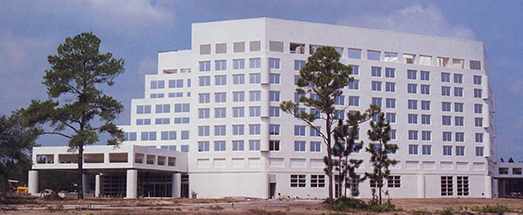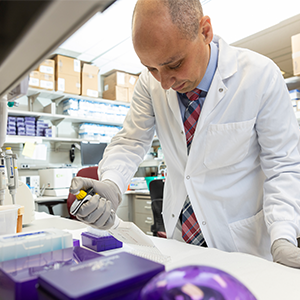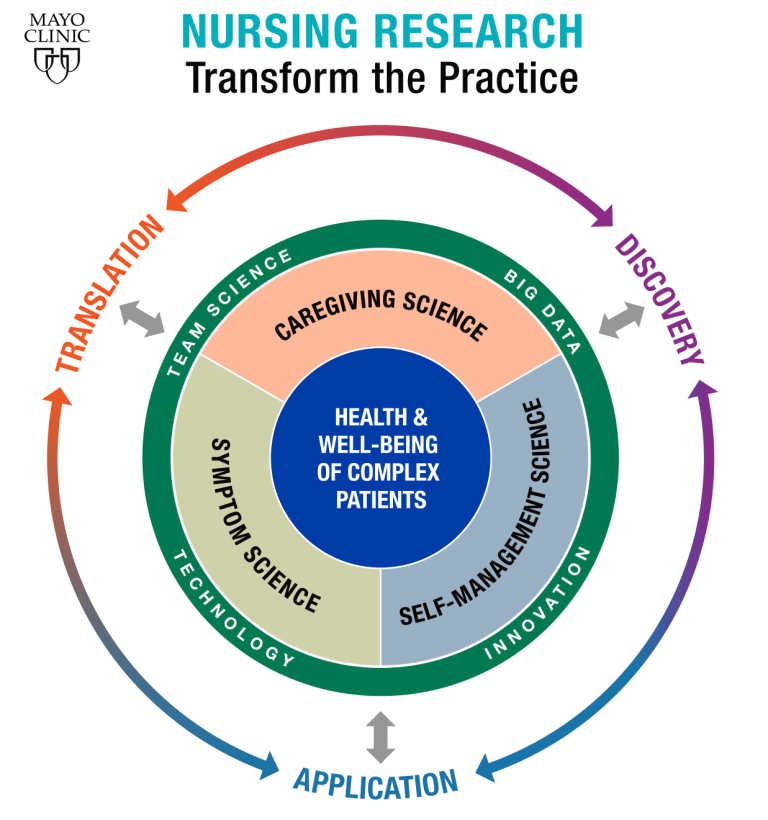-
#FlashbackFriday 1986: Opening the Florida campus

This article first appeared in October 1986, in the publication Mayovox.
An idea that began cautiously in the boardroom of Mayo Clinic almost seven years ago took a confident step into reality this month in Jacksonville, Fla.
Amidst a crowd of about 800 people, Mayo Clinic Jacksonville was inaugurated Oct. 3, becoming Mayo’s first group practice facility outside Rochester. Mayo’s second regional clinic, in Scottsdale, Ariz., is being readied for a spring opening.
Among those attending the Jacksonville dedication ceremonies were the Reverend Billy Graham; Dr. W. Eugene Mayberry, president and chief executive officer, Mayo Foundation; Jacksonville Mayor Jake Godbold; Samuel C. Johnson, chairman and chief executive officer of S.C. Johnson & Son, Inc., and chairman of the Mayo Foundation Board of Trustees; and J.E. Davis of Jacksonville.
The new Mayo facility is being named “The Davis Building,” in recognition of the support of Mr. and Mrs. Davis and members of their family. The Davis’ donated the land on which the clinic site is located, and have been instrumental in organizing community support for Mayo Clinic Jacksonville.
The $35-million Jacksonville clinic, situated on 140 acres of woodland 14 miles outside downtown Jacksonville, will draw patients from a 500-mile radius of the city. The glistening five-story diagnostic center will open the medical and surgical specialty areas. In addition, about 150 support people have been employed.
A thoroughly modern facility, Mayo Clinic Jacksonville has 100 examining rooms, state-of-the-art laboratory and radiology equipment, a medical education auditorium, in-house optical services and a pharmacy. A sophisticated telecommunications system, with teleconferencing capabilities, will enable clinic physicians and other personnel to communicate freely with Mayo Clinic Rochester on patient care and other matters.
Most patients requiring hospitalization will be treated at nearby St. Luke’s Hospital, a 289-bed facility which was relocated to its present site from north Jacksonville in 1984. It is Florida’s oldest hospital.
However, as patient demand at the clinic increases, additional space will undoubtedly become a concern, Mayo officials say. Expansion planning is currently underway to add additional floors to the clinic building (the facility can be expanded to 14 floors).
To help accommodate clinic patients and visitors, Marriott Corporation will build a 75-room Marriott Courtyard facility on Mayo property, with another 75 rooms to be added later.
The confident pace at which Mayo is pursuing its geographical diversification plan contrasts sharply to the cautious scrutiny the idea was subjected to when it was first discussed at Mayo nearly seven years ago.
“No other medical institution had done anything remotely like what we were considering,” says Dr. W. Eugene Mayberry, reflecting on how the idea came about. “So we weren’t about to attempt it without a great deal of study — looking at the advantages and the risks involved…We knew it would be a tremendous undertaking, both in personnel and in financial costs.”
The idea first surfaced at a Board of Governors meeting in late 1979 and began to be discussed seriously by members in the spring of the following year. “But the time wasn’t right for the idea to take hold,” says Dr. Mayberry. “Not enough had changed on the health care scene nationally.”
The concept of diversification was shelved until 1983 when the board again considered it in light of medicine’s increasing conglomerate-like posture. This time, the board voted to actively pursue the idea.
“We concluded that in a competitive health care environment, we no longer had the luxury of staying put…we had to have the foresight and boldness to move out,” says Dr. Mayberry.
Mayo wasted little time in setting its idea in motion. In August, 1984, it announced that it was diversifying to Jacksonville. Similar plans for Scottsdale were announced in winter, 1985. “We were fully aware of the scope of taking on two diversification plans at once,” says Dr. Mayberry, “but we were confident the moves would succeed.”
Some physicians in Jacksonville and Scottsdale voiced opposition to Mayo’s pending arrival. But through frequent dialogue with area physicians, Mayo officials have seen an easing of ill feelings and an improvement in relations. “I think physicians there will find us to be very good citizens of the medical community,” says Dr. Mayberry.
What does Mayo actually bring to its new geographical areas? Dr. D. Thane Cody, chief executive officer of Mayo Clinic Jacksonville, responds: “Our team approach to the practice of medicine, backed by our enormous research and education programs, is truly unique. There are other clinics patterned after Mayo, but none identical or as large. Consequently, we do have a different type of medical practice to offer people in new regions of the country.
“…Mayo Clinic has often been described as a national medical resource. By moving out of the Midwest to other regions of the country, we can truly live up to that description,” he says.
Any future diversification expansions by Mayo will depend upon the success of the Jacksonville and Scottsdale projects, Mayo’s top administrators say.
Just as Mayo prides itself in its teamwork approach to medicine, it was teamwork — Mayo people working together at all levels — that helped the Jacksonville clinic become a reality.
“It’s an enormous, awesome accomplishment, one that everyone can be proud of and one that is in line with the finest traditions of Mayo,” says Dr. Mayberry. “We also owe a special thanks to the construction personnel, architects and the trade specialists who, with much effort, have brought the building to fruition.”
Lessons learned in Jacksonville will be applied to the starting up of the Scottsdale clinic, says Dr. Mayberry.







